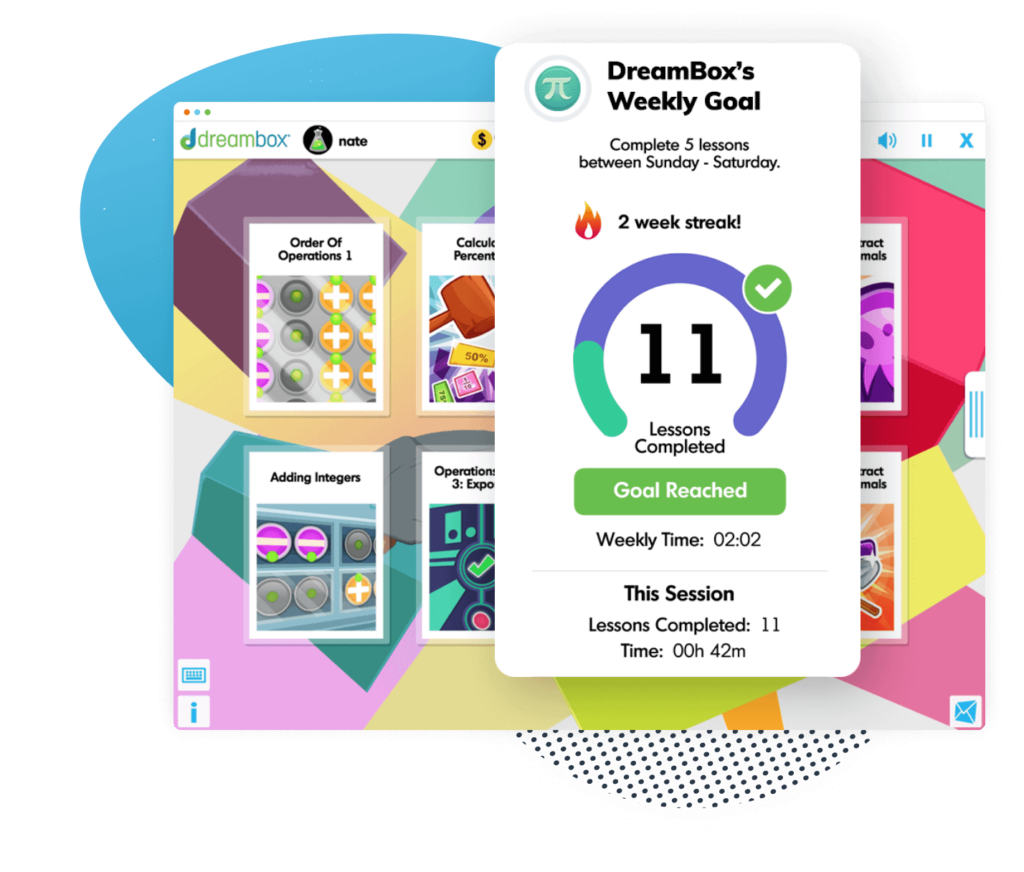A guide to top 4th grade homeschool curriculum recommendations
Everything you need to know about how to homeschool a 4th grader.

Author
Kristy Howard
Published:
April 2025
Key takeaways
- • Fourth grade is often a transition year in education and child development.
- • Most often, 4th grade homeschool curriculum has a heavy focus on building mastery in math, reading, and life skills, and creative expression through art, music, and physical activity.
- • From schedules and curriculum to electives and skill mastery, here’s what you need to know to homeschool fourth grade with confidence.
When my oldest child started fourth grade, I remember the questions running through my mind as a homeschool mom: Am I covering all the basics well enough? Is she behind in math? Should I enroll her in gymnastics or not? What about music and art?
Fourth grade is often a transitory year for kids, and it can feel scary when you’ve taken on the role of home educator! There are a lot of moving parts involved in providing a thorough education for your child, and something about moving into those middle elementary years can feel a lot like extra pressure to get it all “right.”
Since I started homeschooling a 4th grader back in 2012, and I’ve taught 4th grade homeschool curriculum to my own kids and other people’s kids many times. Eventually, I gave up worrying over every little detail, and simply focused on enjoying the process of discovery along with my students.
If you plan to homeschool fourth grade, there are a few things to know so you can feel prepared and confident.
Which subjects are taught in the 4th grade?
The answer to this question will partly depend on what state you live in. A quick review of homeschool state laws will help you determine if your state has required subjects or not.
But generally speaking, 4th grade homeschool curriculum should include the following:
- Math
- Language Arts (including reading, writing, literature, and spelling)
- Social Studies (including history and geography)
- Science
- Computer Skills
- Music and Art
- Physical Education
How do you homeschool a 4th grader?
To homeschool fourth grade, you need to take a few simple but intentional steps. The most important thing to realize is that homeschooling doesn’t have to look like private or public schooling in order to be thorough. “Good” homeschooling will include a written curriculum (or online curriculum), some kind of structure or schedule, and lots of fun!
To prep, make sure you have the following supplies on hand for yourself and your student:
- Computer or laptop
- Printer
- Digital or paper planner
- Library card
- 4th grade homeschool curriculum
- Tote (for you)
- Backpack (for your child)
- Notebooks and folders
- Basic school supplies
To dive a little deeper into this topic, also read “How to Start Homeschooling: Everything Parents Need to Know.”
How many hours do you homeschool a day?
In public and private school, a fourth grader will be in school for six to eight hours a day, four or five days a week. In some states, homeschoolers are required to closely mirror the public school schedule. (Again, it’s important to check your state homeschool laws for required learning days or hours per school year.)
If your state is more flexible on the required learning hours, a reasonable schedule for homeschooling a 4th grader will include about three to four hours of focused learning time per day, four to five days per week.
My family has always embraced a four-day school week as homeschoolers, which gives us the freedom to either enjoy a long weekend or take weekly extracurriculars (like art, music, theatre, or sports).
As a home educator, you have the freedom to decide what works best for your work and family schedule, and also to determine how much time your student needs in order to master certain skills.
State homeschool laws vary from no required days or hours, to fairly strict requirements, so make sure you check out your state homeschooling laws and learn about required hours or days of school per year.
What are the best 4th-grade homeschool curriculums?
You have many wonderful options when it comes to choosing a fourth grade homeschool curriculum! In fact, I’ve heard many new homeschool moms express overwhelm at how many options there are.
Here are a two easy ways to narrow down your options (and overwhelm) when it comes to picking a 4th grade homeschool curriculum:
- Learn about learning styles and try to figure out your child’s
- Become familiar with the 8 most common types of homeschooling methods
Let’s look at some specific fourth grade homeschool curriculum in the subjects of language arts, math, history, science, art, and physical education.
4th grade language arts homeschool curriculum
I believe that language arts is one of the most important subjects you will teach as you homeschool fourth grade (or any elementary grade). Why? Because language arts encompasses everything from reading and spelling to comprehension and writing.
Depending on your preferred homeschool style and method, you may enjoy any of the following as you teach language arts to your fourth grader:
Reading literature aloud together
Writing short stories
Handwriting practice
Dication
Trips to the library
Watching the movie after reading a book
A few highly recommended language arts 4th grade homeschool curriculum include:
Grammar Galaxy (Yellow Star)
Shurley English (Level 4)
All About Reading (Level 4)
All About Spelling (Level 4)
Structure and Style for Students (Year 1 Level A)
Handwriting Without Tears
Easy Peasy All-in-One Homeschool (Language Arts 4)
4th grade math homeschool curriculum
Math is one of those subjects where mastery and memorization are not an option–but you can still keep it fun! Here are a few resources support your child’s math success:
Here are a few of the top-rated homeschool math curriculums for 4th grade:
- The Critical Thinking Company (Level E)
- Master Books (Math Lessons for a Living Education 4)
- Saxon Math (Level 5/4)
- Math-U-See (“Delta” Level)
- Singapore Math (Levels 4A and 4B)
4th grade history homeschool curriculum
I think the most important thing to remember when teaching social studies to a fourth grader is not to reduce the learning to reading boring textbooks and memorizing a long list of facts. Make history come alive!
I encourage you to include a few of the following activities in your homeschool program for fourth grade social studies:
- Trips to museums
- Visits to historical sites
- Movies or shows about historical characters or events
- Dress-up or reenactments, if that’s fun for your student
- Colorful maps for table place mats, wall arts, etc.
- Songs and jingles to help memorize facts and dates
Here are a few favorite resources for teaching 4th grade history and social studies:
- The Story of the World (Volume 1)
- The Mystery of History (Volume 1)
- History Quest (four volumes in total, a recommended read aloud up to 4th grade)
- Curiosity Chronicles (the first three volumes are suitable for 4th grade learning)
- Beyond the Page (a literature-based program that covers science, social studies, language arts, and math)
- Beautiful Feet Books (a Charlotte Mason literature-based K – 12 curriculum)
I can’t over emphasize the importance of reading interesting, engaging history books with your student! And by “history books,” I don’t necessarily mean textbooks (although those have their place). If you prefer a traditional approach to homeschooling, check out the first four recommendations in the history curriculum list above.
But there’s certainly nothing wrong with browsing your local library for chapter books, or even picture books, about historical characters, events, or places, and snuggling on the coach with your fourth grader (and a cup of hot cocoa or a snack) to “do history” together.
I’ve found that these are the kind of “history lessons” that have stuck best with my kids, and made them excited to learn more about the people who lived before us.
4th grade science homeschool curriculum
Much like history, exploring science with your 4th grader should be exciting, hands-on, and anything but boring!
I’m not a “science” person, but I’ve still enjoyed discovering this subject with my kids. Here are some top recommended science resources for fourth grade:
- Noeo Science (Level 2 is geared for 4th – 6th grades)
- Journey Homeschool Academy (Level A, video-based science curriculum)
- Beyond the Page (a literature-based program that covers science, social studies, language arts, and math)
- Beautiful Feet Books (a Charlotte Mason literature-based K – 12 curriculum)
Table of contents
Get help with homeschool math with DreamBox!
4th grade art homeschool curriculum
Here’s the good news about teaching art as a homeschooler: you don’t have to be a great artist! Especially during the elementary years, giving your child the freedom to explore and create (and make messes) is usually all you need to do.
That being said, enrolling your child in a local art class is always an option for homeschool art, too. I’ve done this option a lot over the years, and my kids always love it.
If a local art class isn’t an option, or you just want to teach art at home, here are some art programs loved by homeschoolers:
- ARTistic Pursuits (4th – 5th grades, a classic art program)
- Freedom Homeschooling (a resource for 100% free art and music curriculum)
- Chalk Pastel (a fine arts program for K – 12th grades)
- Easy Peasy All-in-One Homeschooling (lots of free art activities, from ancient to modern)
- The Homeschool Art Box (just what it sounds like, an art lesson in a box!)
- Child-Size Masterpieces (a Montessori-approach to art, four books in total)
- Denise Logan’s Amazing Art Projects for Children (for second grade and up)
- Global Art (the ideal art book for use alongside world cultures or geography)
- Great American Artists for Kids (perfect art and artist study guide)
What Do You See? (a three-volume art study program, suitable for elementary)
4th grade physical education homeschool curriculum
The most important parts of physical education for a fourth grader include the following:
- Teamwork
- Sportsmanship
- Basic Motor Skills
- Game Play and Strategies
- Health
There are a number of ways to approach physical education in fourth grade as a homeschooler. If your state requires this to be taught as a “subject,” you might look into implementing an actual curriculum or program. If not, consider enrolling your child in a sport or activity that they enjoy–that option certainly ticks all the boxes for a robust physical education program!
Here are a few 4th-grade friendly sports activity options lots of homeschool families enjoy:
- FLAG Football
- Baseball
- Swim
- Cheer
- Martial Arts
- T-Ball
- Gymnastics
- Horseback Riding
- Ballet
Here are a few physical education curriculums for your 4th grade homeschool program:
- Physical Education 4 -6 (a video-based P.E. program by Master Books Academy)
- Freedom Homeschooling (completely FREE physical education programs and activities)
- Family Time Fitness (a complete pre-K through high school homeschool P.E. program)
Easy Peasy All-in-One Homeschooling (FREE health and P.E. for homeschoolers)

The math program that drives results
Get started today!
DreamBox adapts to your child’s level and learning needs, ensuring they are appropriately challenged and get confidence-building wins.
FAQs
Depending on your state homeschool laws, a 4th grader should do anywhere between two for four hours of focused learning per day, four to five days a week.
The best way to homeschool fourth grade is to pick a 4th grade homeschool curriculum that aligns with both your homeschool style and your child’s learning style; invest in a few basic school supplies; create a sustainable schedule for your homeschool program; be consistent with your chosen schooling time; stay connected with friend groups or a homeschool community; have lots of fun!
Lots of read aloud time, with a strong focus on mastering reading and math skills. (Check your local homeschool laws to see if your state has a required list of subjects.) Common subjects for fourth graders to learn include math, language arts (including reading, spelling, and writing), science, history and geography, music and art, life skills, and physical education.
No, it isn’t hard to homeschool fourth grade. But it can feel like a transition, as your child moves toward skill mastery and more independent learning. My best advice is to take the posture of a student yourself; as a homeschooler, you will always be both a teacher and a student, as you learn the best way to cultivate a love of learning in your child.
Take at home math practice to the next level
Empowering parents and educators to make math practice more impactful. Plus, your kids will love it.


